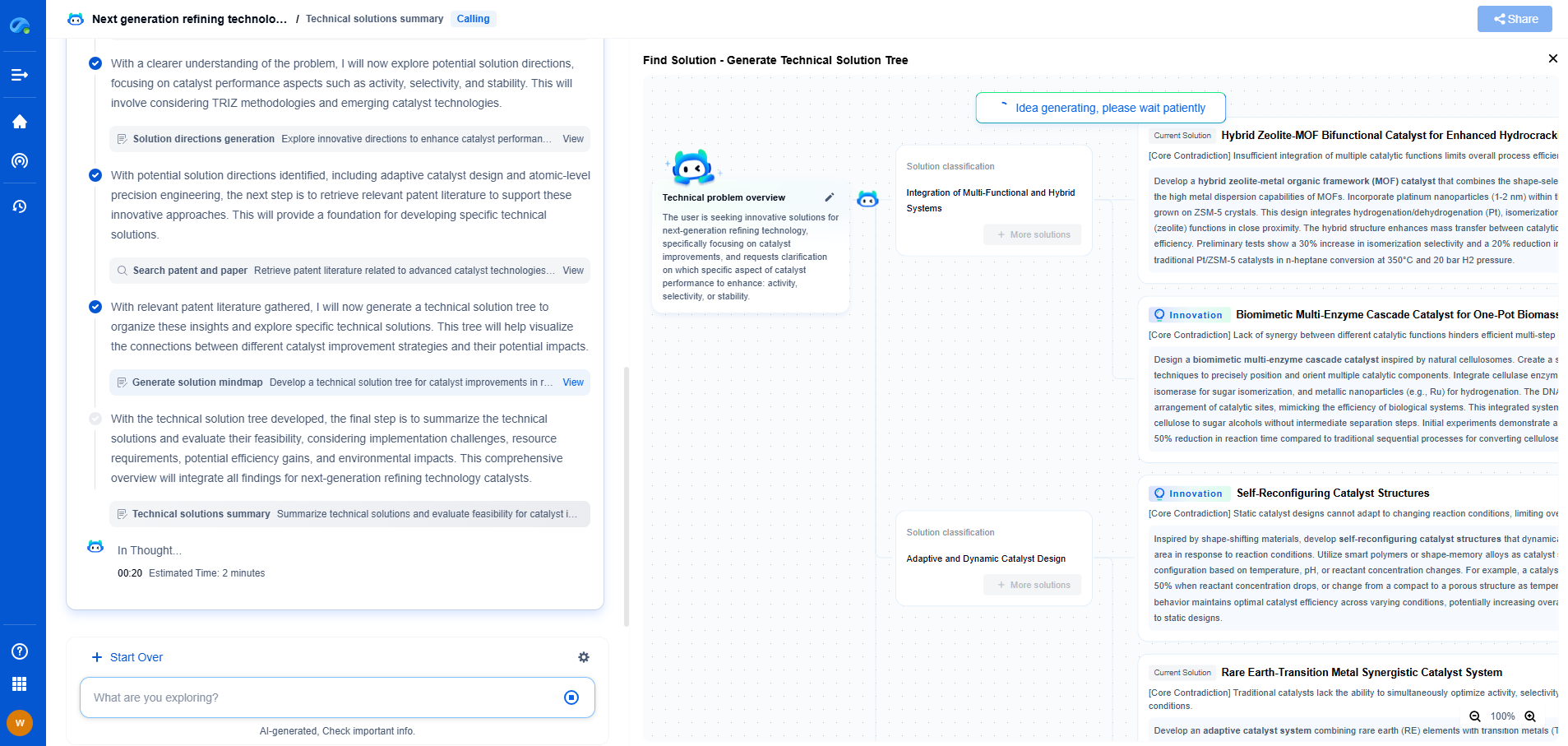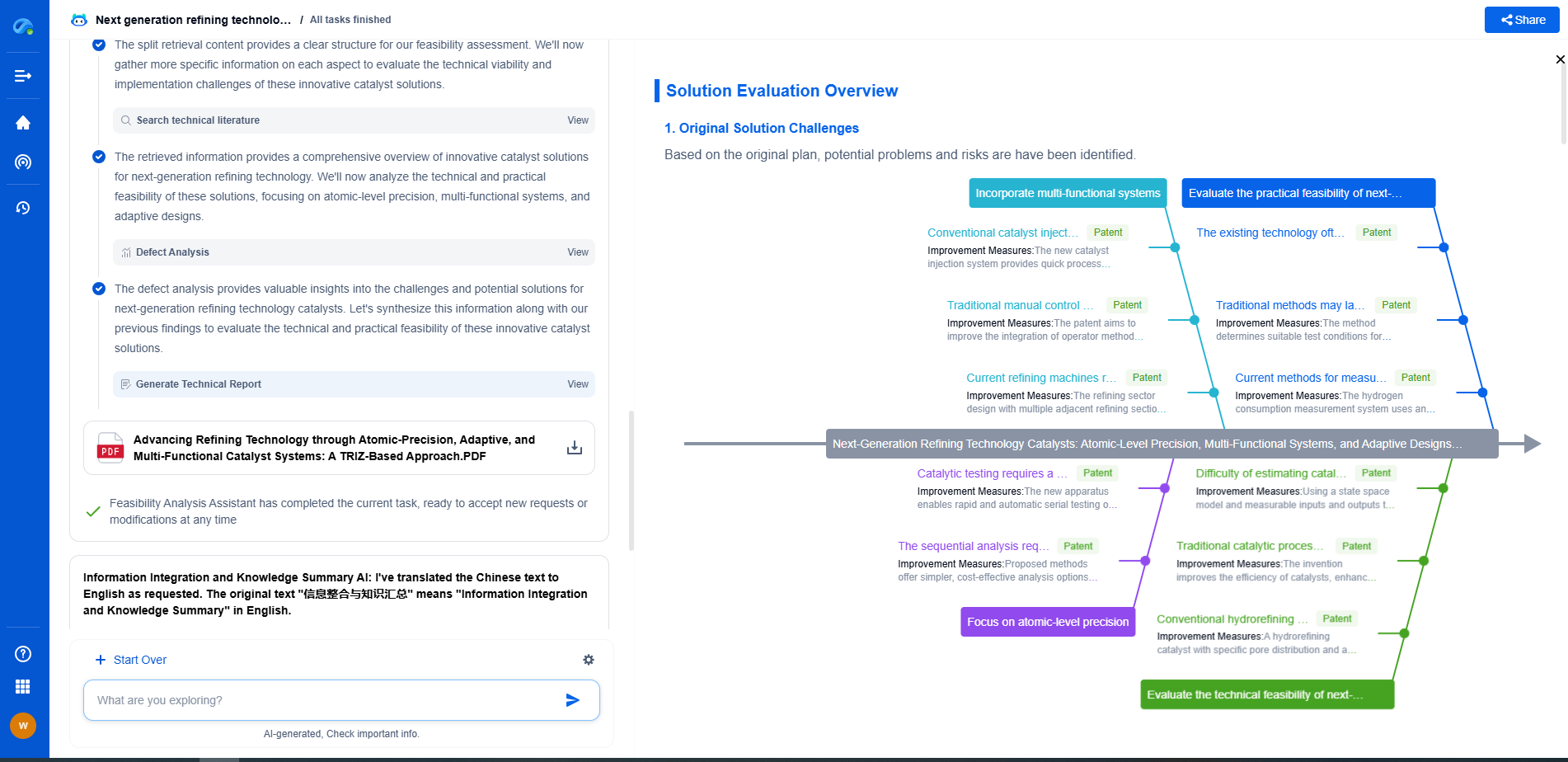How to Perform Structural Vibration Monitoring in Bridges and Towers
JUL 16, 2025 |
Structural vibration monitoring is a critical aspect of maintaining the integrity and safety of bridges and towers. These structures are subjected to various dynamic forces, such as wind, traffic loads, and seismic activities, which can induce vibrations. Over time, these vibrations can lead to structural fatigue, damage, and even catastrophic failures. Monitoring vibrations can help in the early detection of potential issues, enabling timely maintenance and repairs, thus ensuring the safety and longevity of the structures.
Understanding Vibration Monitoring
Vibration monitoring involves the use of sensors and data analysis techniques to measure and analyze the dynamic behavior of structures. This process helps in understanding the response of a structure to different forces and in identifying changes that may indicate structural problems. By continuously monitoring vibrations, engineers can assess the health of a structure and make informed decisions about maintenance and repairs.
Choosing the Right Sensors
The selection of appropriate sensors is a crucial step in vibration monitoring. The most commonly used sensors include accelerometers, strain gauges, and displacement sensors. Accelerometers measure the acceleration of a structure's movement, providing data on its dynamic response. Strain gauges measure the deformation of structural elements, offering insights into stress levels. Displacement sensors measure the movement of specific points on the structure, allowing for detailed analysis of its behavior.
When selecting sensors, consider factors such as sensitivity, frequency range, and environmental conditions. It is essential to choose sensors that can accurately capture the specific vibrations of interest while withstanding the conditions they will be exposed to, such as temperature variations and humidity.
Placement of Sensors
The strategic placement of sensors is vital for effective vibration monitoring. Sensors should be positioned at locations where significant vibrations are expected, such as at mid-spans, supports, or connections in bridges, and at critical points in towers. The placement should also consider the mode shapes of the structure to capture the most relevant data. In complex structures, a finite element analysis may be conducted to determine optimal sensor locations.
Data Acquisition and Analysis
Once the sensors are in place, the next step is data acquisition. This involves collecting vibration data over a period of time using data acquisition systems. These systems should be capable of handling large volumes of data and providing real-time monitoring capabilities. The data is processed and analyzed to identify patterns, trends, and anomalies.
Advanced analysis techniques, such as frequency analysis and modal analysis, can be used to interpret the data. Frequency analysis helps in identifying the natural frequencies of the structure and any changes that may indicate damage. Modal analysis provides insights into the mode shapes and damping characteristics of the structure, crucial for understanding its dynamic behavior.
Interpreting Results and Taking Action
Interpreting the results of vibration monitoring requires expertise in structural dynamics. Any deviations from the expected behavior or sudden changes in the vibration patterns may indicate potential issues. It is important to differentiate between normal variations and those that warrant further investigation.
Once potential issues are identified, engineers need to determine the severity and urgency of the problem. This may involve additional inspections or more detailed analysis. Based on the findings, appropriate actions should be taken, which could include repairs, reinforcement, or even temporary closure of the structure to ensure safety.
The Role of Technology and Innovation
Advancements in technology have significantly enhanced the capabilities of structural vibration monitoring. The integration of wireless sensor networks, cloud computing, and machine learning has made it easier to collect and analyze large datasets. These technologies enable continuous monitoring, remote access to data, and predictive maintenance, allowing for more proactive management of structural health.
Emerging innovations, such as smart materials and self-sensing structures, hold promise for the future of vibration monitoring. These technologies can provide real-time feedback on the structural condition and even adapt to changes, improving the resilience and sustainability of bridges and towers.
Conclusion
Structural vibration monitoring is an essential component of ensuring the safety and longevity of bridges and towers. By understanding and implementing the right techniques and technologies, engineers can effectively monitor structural health, detect potential issues early, and take appropriate actions to maintain the integrity of these vital infrastructures. Embracing innovation and continuously improving monitoring practices will further enhance our ability to safeguard these structures for future generations.
In the world of vibration damping, structural health monitoring, and acoustic noise suppression, staying ahead requires more than intuition—it demands constant awareness of material innovations, sensor architectures, and IP trends across mechanical, automotive, aerospace, and building acoustics.
Patsnap Eureka, our intelligent AI assistant built for R&D professionals in high-tech sectors, empowers you with real-time expert-level analysis, technology roadmap exploration, and strategic mapping of core patents—all within a seamless, user-friendly interface.
⚙️ Bring Eureka into your vibration intelligence workflow—and reduce guesswork in your R&D pipeline. Start your free experience today.
- R&D
- Intellectual Property
- Life Sciences
- Materials
- Tech Scout
- Unparalleled Data Quality
- Higher Quality Content
- 60% Fewer Hallucinations
Browse by: Latest US Patents, China's latest patents, Technical Efficacy Thesaurus, Application Domain, Technology Topic, Popular Technical Reports.
© 2025 PatSnap. All rights reserved.Legal|Privacy policy|Modern Slavery Act Transparency Statement|Sitemap|About US| Contact US: help@patsnap.com

